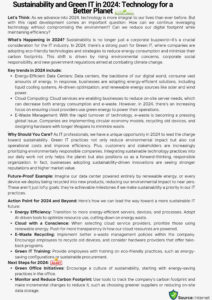Transforming Weather Forecasting: Tech Giants’ AI Models 2024

In recent years, the landscape of weather forecasting has undergone a revolutionary transformation, propelled by the pioneering efforts of tech giants such as Google, Nvidia, and Huawei. Their cutting-edge Artificial Intelligence (AI) models have emerged as game-changers in the realm of meteorology, offering swift and precise predictions that rival traditional methods. A study, unveiled in the esteemed journal npj Climate and Atmospheric Science, sheds light on the remarkable capabilities of AI-powered weather forecasting, underscoring its potential to enhance accuracy, efficiency, and resource optimization.
Traditional weather prediction methodologies have long relied on a combination of historical data, mathematical models, and computational algorithms. While effective to a certain extent, these approaches often grapple with challenges such as computational complexity, time constraints, and resource-intensive processes. Enter AI-powered forecasting models, designed to leverage the vast capabilities of machine learning and deep learning algorithms.
The study delineates how AI-driven weather prediction models exhibit unparalleled proficiency in anticipating the trajectory and intensity of major storms. By analyzing vast datasets encompassing meteorological parameters, satellite imagery, and atmospheric dynamics, these models can discern intricate patterns and correlations that elude traditional methodologies. Consequently, AI-based forecasts boast accuracy levels on par with, if not surpassing, conventional techniques, while offering distinct advantages in terms of speed, cost-effectiveness, and resource utilization.
One of the key advantages of AI-driven weather forecasting lies in its ability to assimilate real-time data streams from diverse sources and swiftly adapt to evolving atmospheric conditions. Through continuous learning and refinement, AI models can dynamically adjust their predictions, ensuring that forecast updates remain timely and relevant. This real-time responsiveness is particularly crucial in scenarios involving rapidly changing weather patterns, such as the onset of severe storms or natural disasters.
Furthermore, AI-based forecasting models demonstrate remarkable scalability, enabling seamless integration with existing weather prediction infrastructure. Whether deployed on cloud-based platforms or embedded within localized forecasting systems, these models can accommodate varying computational requirements and operational constraints. As a result, meteorological agencies and research institutions can leverage AI technologies to augment their forecasting capabilities without significant overhauls or investments.
Moreover, the study underscores the cost-effectiveness of AI-powered weather forecasting, highlighting the potential for substantial savings in computational resources and operational expenditures. By streamlining data processing tasks and optimizing predictive algorithms, AI models can deliver actionable insights at a fraction of the time and cost associated with traditional methodologies. This cost-efficiency factor is particularly advantageous for resource-constrained regions and developing countries seeking to bolster their weather forecasting infrastructure.
Google, Nvidia, and Huawei are at the forefront of this paradigm shift in weather prediction, leveraging their expertise in AI research and computational innovation to drive meaningful advancements. Google’s DeepMind, for instance, has pioneered the application of deep learning algorithms for weather forecasting, achieving notable success in predicting precipitation patterns and atmospheric dynamics. Similarly, Nvidia’s GPU-accelerated computing platforms have empowered researchers to train and deploy complex AI models at unprecedented speeds, revolutionizing the scalability and performance of weather prediction systems. Meanwhile, Huawei’s investments in AI-driven meteorology have yielded groundbreaking insights into climate modeling and extreme weather events, positioning the company as a key player in the field.
Looking ahead, the convergence of AI and weather forecasting holds immense promise for addressing pressing challenges in climate resilience, disaster preparedness, and environmental sustainability. By harnessing the collective intelligence of tech giants and research communities worldwide, we can unlock new frontiers in predictive accuracy, resilience, and societal impact. As AI continues to evolve and permeate every facet of our lives, its transformative potential in shaping the future of weather forecasting remains unequivocal.
In conclusion, the study published in npj Climate and Atmospheric Science underscores the pivotal role of tech giants like Google, Nvidia, and Huawei in revolutionizing weather forecasting through AI-driven models. These models not only rival the accuracy of traditional methods but also offer superior speed, cost-effectiveness, and scalability. As we stand on the cusp of a new era in meteorology, fueled by the convergence of AI and big data analytics, the possibilities for innovation and impact are boundless.






